How Humans, Animals, and Sound Environments Shape Each Other
From the song of a titmouse in a tree to the roar of a campaign rally in a stadium full of people, sounds are a measure of the impact humans and the natural world have on each other. Scholars who study sound in a range of disciplines gathered to exchange their findings during a Signature Program of The Vassar Institute for the Liberal Arts in May.
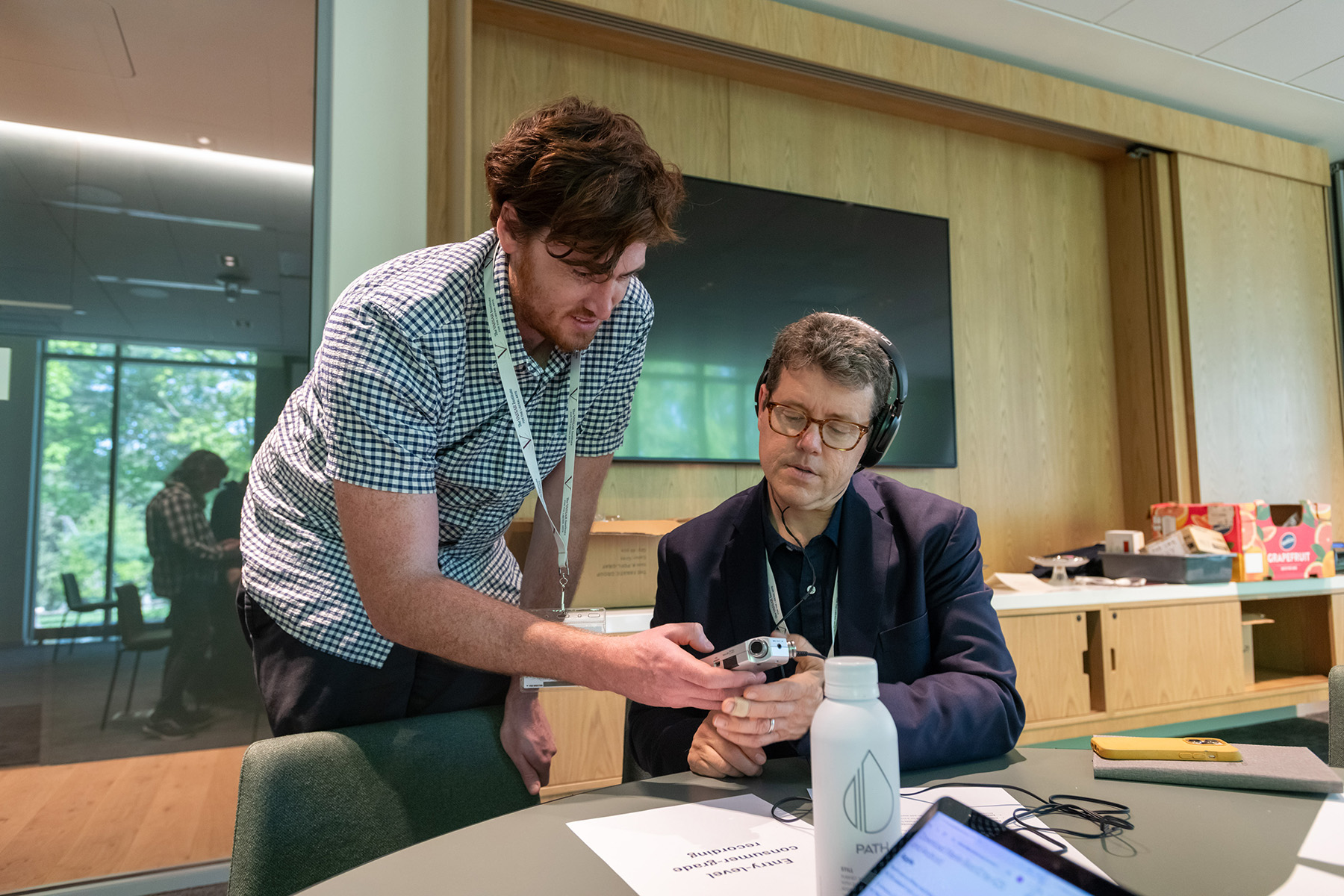
Photo by Karl Rabe
“Soundscapes and the Anthropocene” featured presentations by faculty in the natural sciences, music, film, and architecture from Vassar, Purdue, Cornell, NYU, and the University of Virginia. Organizers were Vassar faculty members Megan Gall, Associate Professor of Biology and Director of the Neuroscience and Behavior Program, and Justin Patch, Associate Professor and Chair of the Music Department.
“I thought the idea of sound as an environment and how humans influence it, but also how it influences humans, would be a really interesting multidisciplinary program,” Gall said.
Patch, who studies sound in religion and politics, highlighted the impact of sound in presidential campaigns. At the peak of stadium rallies in the 2010s, candidates who spoke to enthusiastic crowds that shook the rafters were more likely to win.
“Noise creates emotional and effective responses that funnel campaign activities,” Patch said. “Sound helps people feel they are part of something greater than themselves.”
In 2024, however, Trump won the race despite much smaller rally turnouts. A growing shift to more personal, homegrown participation in political campaigning had reached an inflection point. With a heavy rotation of podcast interviews, the Trump campaign reached consumers who wanted in-your-ear messages that felt authentic and personal.
“There’s a need to feel intimacy, to be part of something larger than you but on your own terms,” Patch said. “It’s comforting rather than exhilarating.”
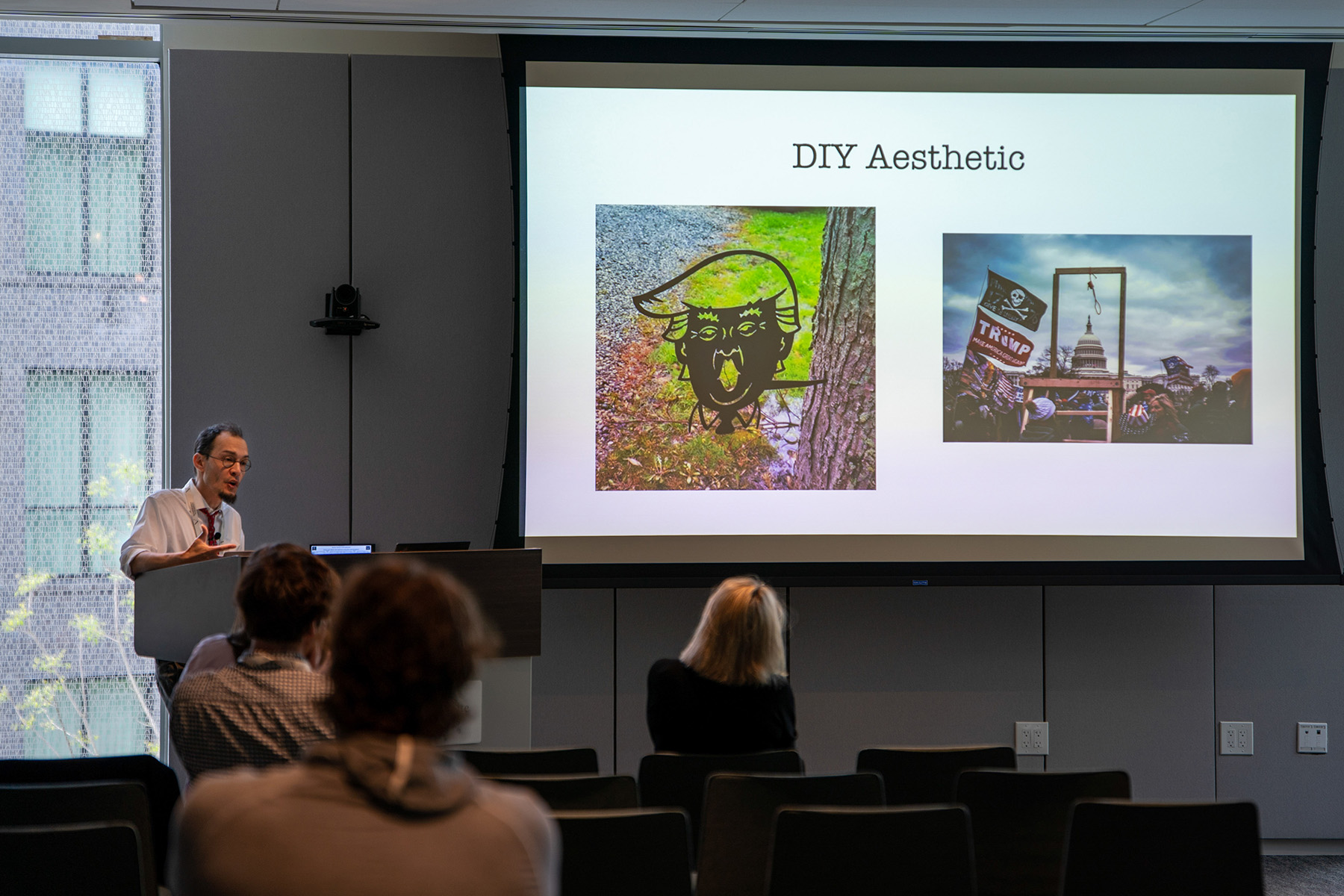
Photo by Lucas Pollet
Gall studies sound from an animal’s perspective: the way the soundscape shapes how their hearing evolves, how their hearing influences their behavior, and how their behavior is influenced by the sounds they make. She and her students conduct studies of birds in The Preserve at Vassar. Human noise is increasingly affecting their ability to hear signals from other birds—whether mating calls or warning chirps. It also means singing louder, which expends more energy and can affect reproduction.
This has parallels for humans, she added. “People who live in really loud environments have a harder time concentrating, and they have higher cortisol levels. So, the way we build and shape environments is really important for humans too.”
People in war zones feel this acutely, said Martin Daughtry, Professor of Music at NYU, who studied the effects of the sound of war on Iraqi citizens and American service members. “One of the principal ways war is experienced is through hearing. They have learned to decode the sounds of conflict while also being damaged by these sounds,” he told the audience.
Political rallies, titmice, and combat zones have one thing in common, Daughtry said: Listening is never neutral. In Iraq, new recruits flinched at the sound of distant gunfire—but seasoned personnel had learned to push it below the level of consciousness.
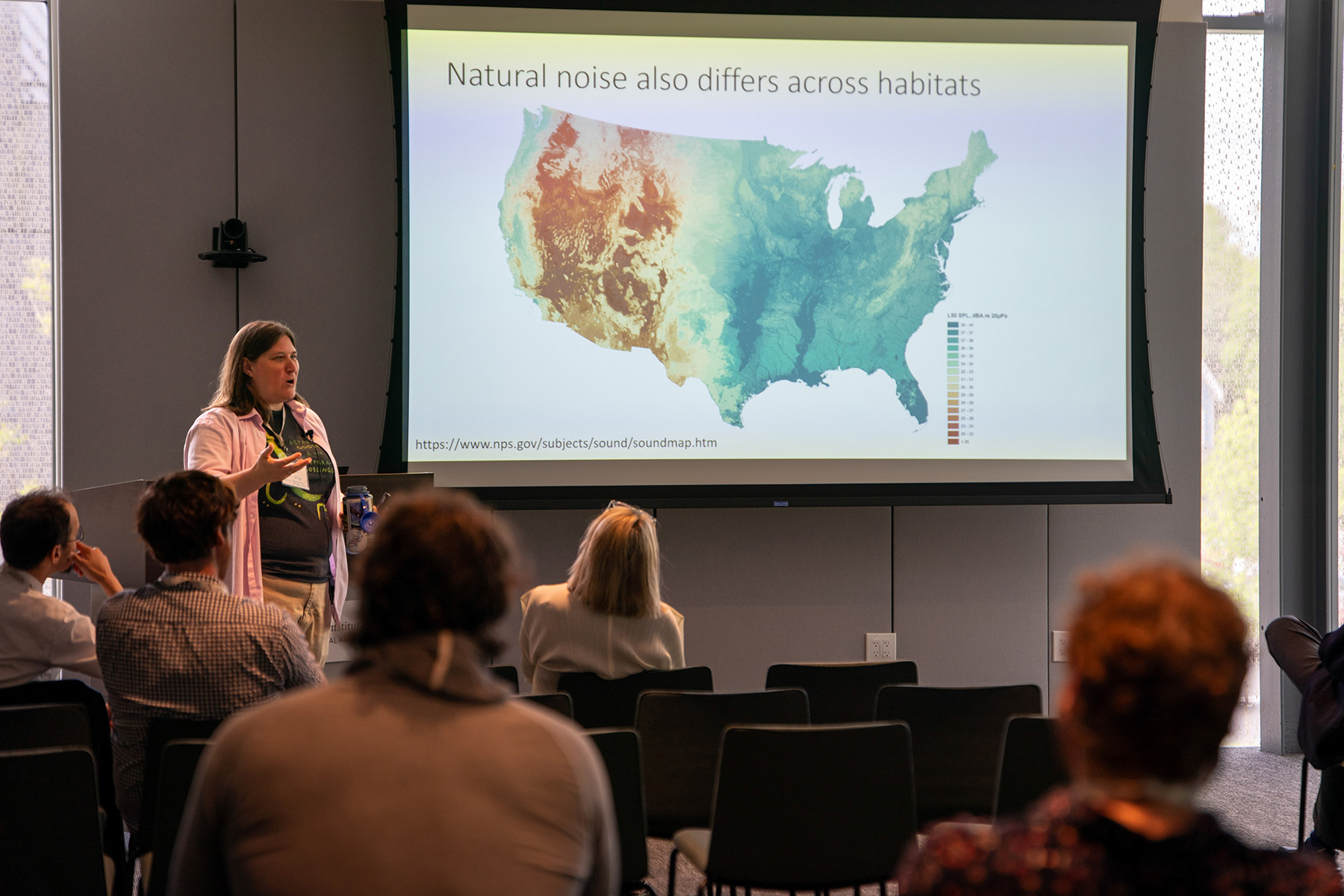
Photo by Lucas Pollet
Ecologist Bryan Pijanowski of Purdue University spoke about exploring sounds in the world’s most remote locations. His mission is to record nature as humans rarely hear it: birds in the highest treetops of the paleotropical forests of Borneo, melting glaciers in subantarctic Patagonia. With the help of students and local researchers, Pijanowski has made four million audio recordings. In Borneo, this involved climbing 120 feet up a tower in a 130-million-year-old rainforest to record the sounds of night and sunrise. More than 500 bird species call that rainforest home.
Pijanowski, who is currently writing a book about the joy of listening and responding to nature, hopes that ancient landscape will remain untouched. “I wanted to go record sounds there because I didn’t want anyone to go back. It is just so special,” he said.
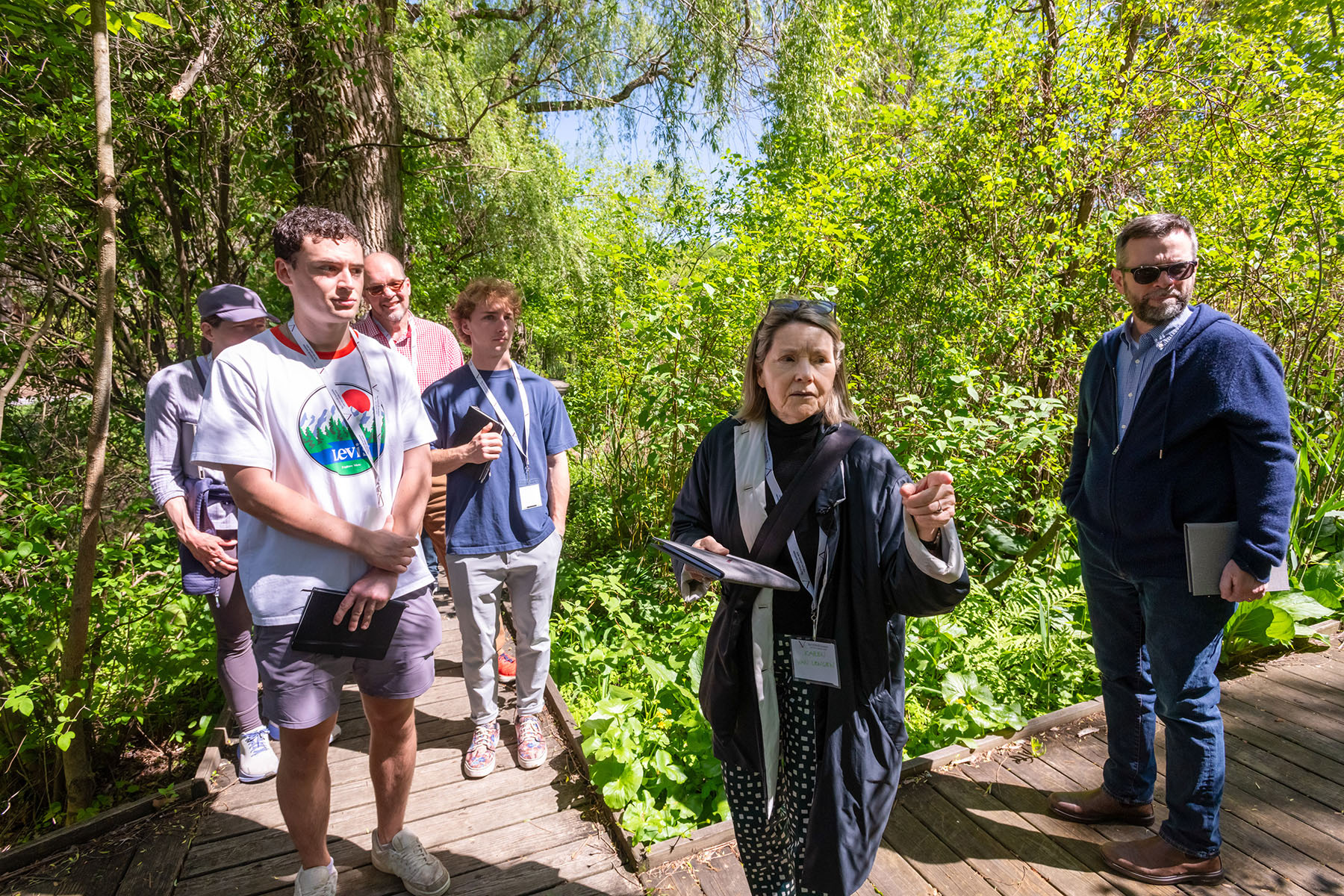
Photo by Karl Rabe
Even buildings reflect and produce sound. Karen Van Lengen ’73, William R. Kenan, Jr. Professor of Architecture and former Dean of the School of Architecture at the University of Virginia, has recorded the sonic qualities of iconic buildings and spaces, from Grand Central Terminal to the thwap of garden gates closing in UVA’s Academical Village.
Van Lengen led a group walk exploring soundscapes on the Vassar campus, pausing at the Outdoor Amphitheater. The site has naturally beautiful acoustics, she said. “There aren’t very many graduation venues like this, and sonically it works because it holds and reflects sound so well.”
In another afternoon workshop, Bobbi Estabrook and Daniela Hedwig, members of the K. Lisa Yang Center for Conservation Bioacoustics at Cornell University, and Tim Boycott '16, a PhD student in the Department of Natural Resources and the Environment, introduced participants to common sound recording equipment and best practices. Patch said the workshop sparked ideas for courses he teaches.
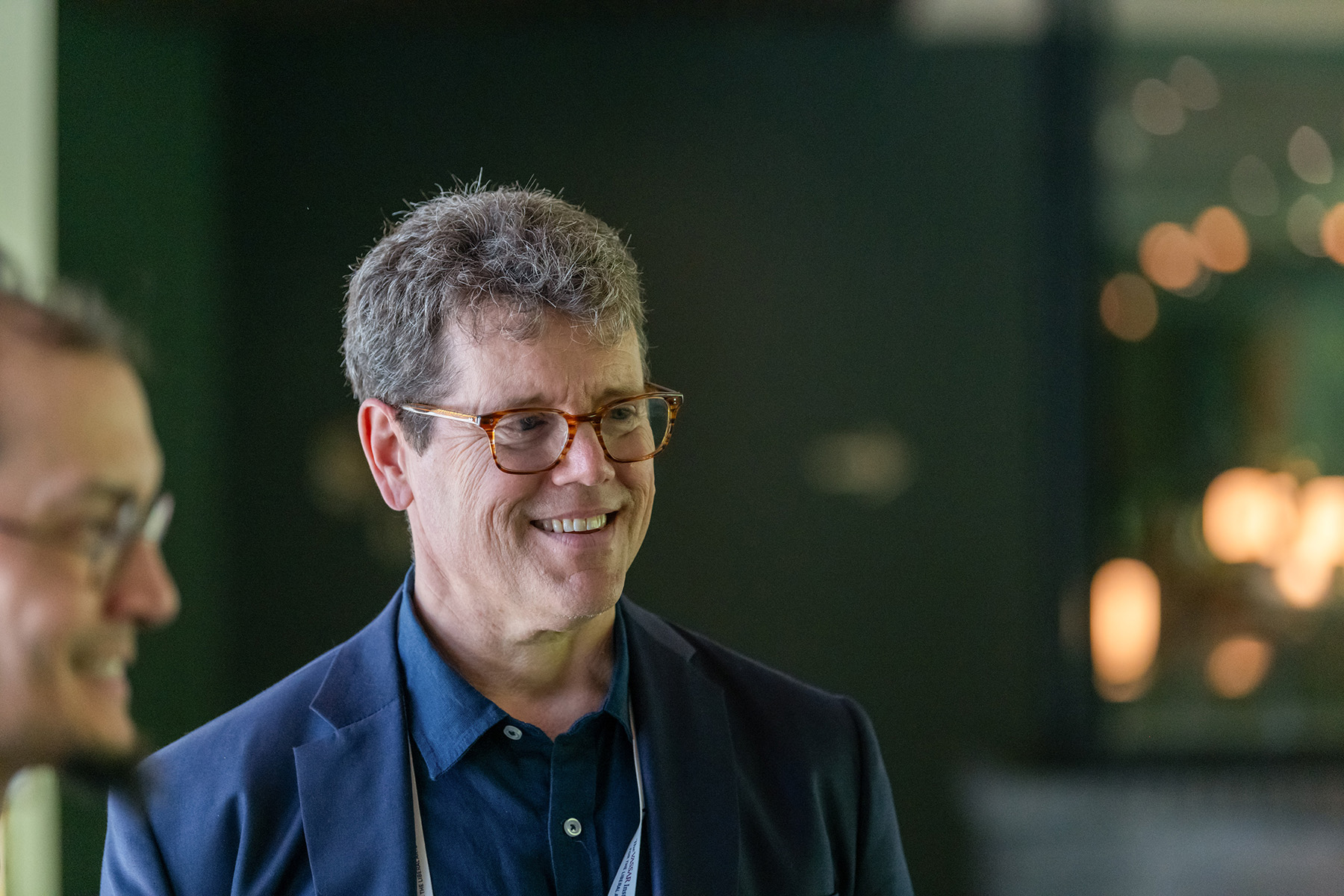
Photo by Karl Rabe
“Our research speaks to each other’s in so many ways,” he said of the conference prticipants, in general. “There are countless overlaps, and each of us is better for engagement outside of our disciplinary homes.”
The evening concluded with a screening of the Emmy-Award winning documentary Sonic Sea, which reveals how human-generated sounds are affecting our ocean environments, and a Q&A with filmmaker Daniel Hinerfeld ’85, Director of Content Partnerships at the Natural Resources Defense Council.